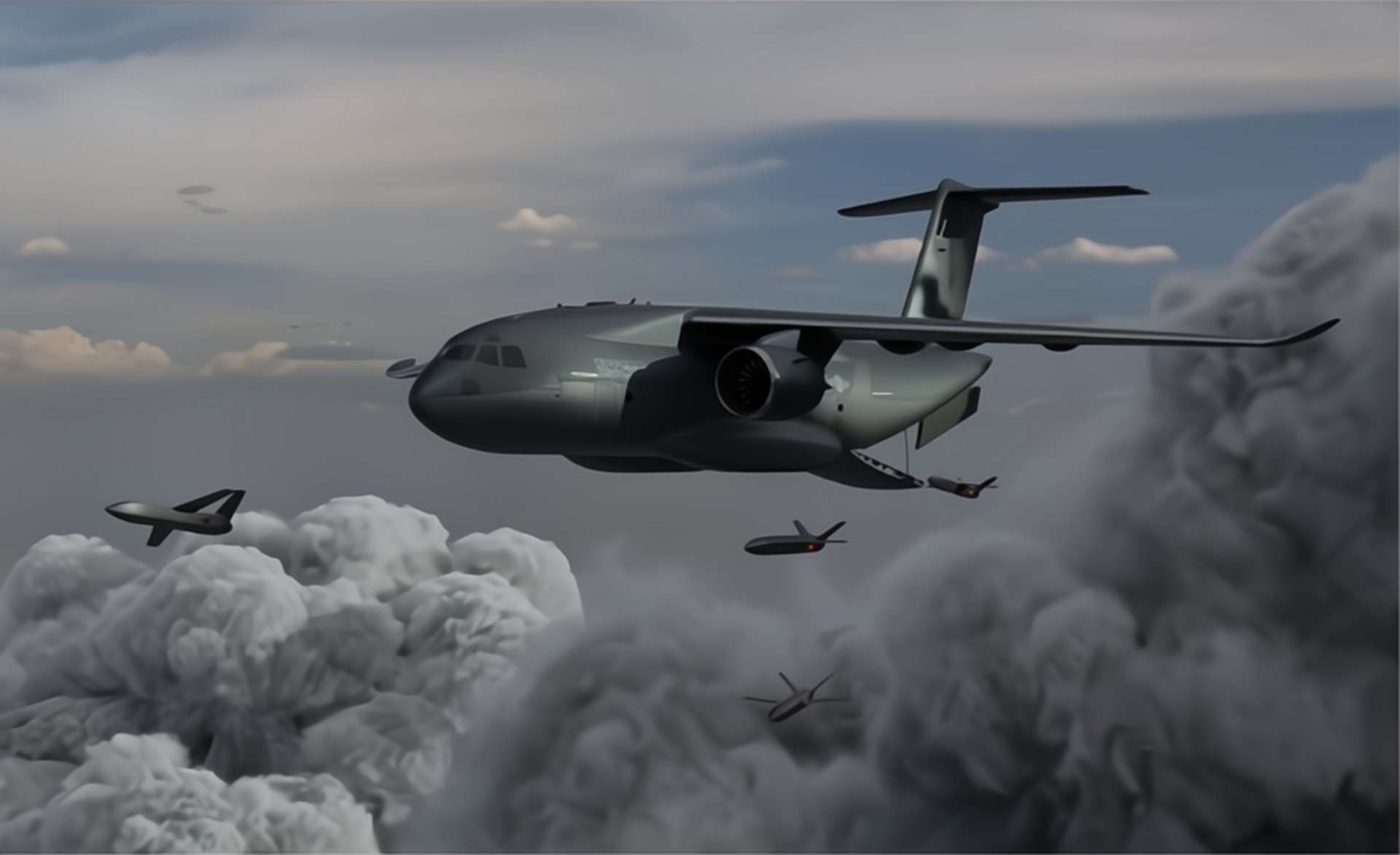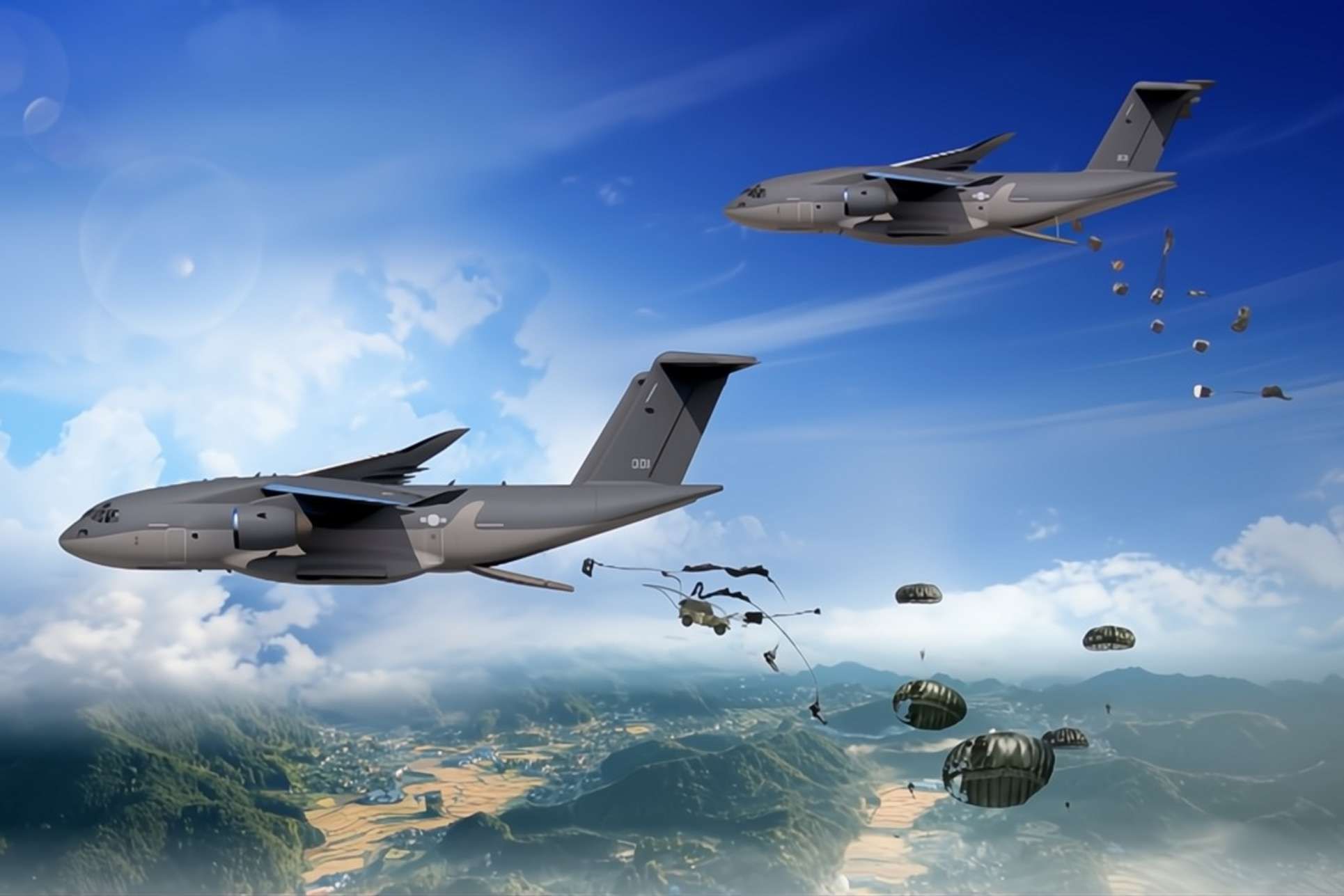Breaking News
South Korea's MC-X multi-role cargo aircraft to replace aging C-130H fleet by 2035.
At the KADEX 2024 exhibition, Korea Aerospace Industries (KAI) presented a mock-up of the MC-X, a multi-role cargo aircraft designed for the transportation of troops, equipment, and cargo over long distances. The aircraft is intended to perform various missions, including military and humanitarian operations. The MC-X will be powered by two turbofan engines and is designed to support a range of special operations. It can be adapted for additional roles such as aerial refueling, maritime patrol, and air-launch platforms.
Follow Army Recognition on Google News at this link

The MC-X project aims to develop two variants: a basic model powered by a turboprop engine, similar to the C-130J-30, with a 20-ton payload and a range of 6,000 kilometers, and an advanced model with twin turbofan engines, modeled after the Embraer C-390, offering a payload of 25 tons and a range of 8,000 kilometers. (Picture source: Army Recognition)
The aircraft will also be configured for integration with the Modular Airborne Firefighting System (MAFFS) and Manned-Unmanned Teaming (MUM-T), broadening its operational scope across multiple mission types. The MC-X will feature a digital fly-by-wire system to enhance control, a head-up display to improve pilots' situational awareness, and a self-protection system to increase survivability during missions. These systems are designed to allow the aircraft to safely and efficiently fulfill its various roles.
The MC-X is projected to be powered by two turbofan engines, each producing more than 30,000 pounds of thrust, enabling it to reach a cruising speed of 862 kilometers per hour (Mach 0.80). The aircraft is designed to carry a maximum payload of 30 metric tons (66,000 pounds) and operate at cruise altitudes above 10,000 meters. It will have a ferry range of over 7,000 kilometers, making it suitable for long-range missions, including military and humanitarian operations.
The cargo compartment of the MC-X will measure 3.5 meters in width, 3.4 meters in height, and 17 meters in length, providing ample space for large and heavy loads. KAI has outlined plans for the MC-X to serve as the foundation for future special mission aircraft, indicating potential adaptability for various specialized roles.

KAI presented a roadmap for MC-X derivatives at ADEX 2023, outlining potential roles such as aerial refueling, maritime patrol, airborne early warning, and electronic warfare. (Picture source: KAI)
This project is part of a larger effort by KAI to develop military tactical transport aircraft. The concept was introduced in 2020, with a proposal made in March 2021. The project aims to develop two variants: a basic model powered by a turboprop engine, similar to the C-130J-30, with a 20-ton payload and a range of 6,000 kilometers, and an advanced model with twin turbofan engines, modeled after the Embraer C-390, offering a payload of 25 tons and a range of 8,000 kilometers. KAI estimates that domestic demand for these aircraft will be around 40 units for military transport and 60 for special-purpose missions, totaling approximately 100 aircraft.
KAI has requested a budget of 3 trillion won for development and 18 trillion won for mass production, translating to 90 billion won per unit if 200 units are produced. The development phase is expected to last 12 years, including five years for the development review and seven years for system development after contract approval. The Republic of Korea Air Force (ROKAF) currently operates 36 transport aircraft and plans to acquire three more. The MC-X is expected to replace the 12 C-130H-30 aircraft, which are scheduled for retirement by 2035, as well as the CN-235 aircraft, expected to be retired by 2040.
The MC-X project reflects a broader strategy to reduce South Korea’s reliance on foreign imports and to bolster domestic production capabilities. However, there has been debate regarding the project’s high cost, with critics noting that Brazil’s Embraer developed its C-390 at a much lower budget, estimated between 300 billion and 700 billion won. In response, KAI has argued that the development costs of similar transport aircraft, such as Japan’s Kawasaki C-2 or Europe’s Airbus A400M, have been significantly higher, and that developing the MC-X domestically will retain capital within the country.

The cargo compartment of the MC-X will measure 3.5 meters in width, 3.4 meters in height, and 17 meters in length, providing ample space for large and heavy loads. (Picture source: KAI)
The MC-X was also displayed as a mock-up at the 2022 Korea Defense Industry Exhibition (DX Korea 2022), drawing comparisons to the Embraer C-390. In early 2023, KAI signed an international joint development memorandum of understanding with the United Arab Emirates, indicating potential international collaboration for the aircraft. KAI presented a roadmap for MC-X derivatives at ADEX 2023, outlining potential roles such as aerial refueling, maritime patrol, airborne early warning, and electronic warfare.
The MC-X is positioned as a solution for both domestic and international markets, filling a niche between tactical and strategic transport aircraft. With a 30-ton payload, the MC-X’s specifications place it between smaller tactical transport aircraft like the C-130 and larger strategic aircraft such as the A400M. However, market prospects remain uncertain, and KAI will need to secure sufficient orders to justify the project’s high development and production costs.
Despite the uncertainty, KAI remains focused on the MC-X as part of its long-term strategy. As the KF-21 fighter project nears completion, KAI has emphasized the importance of retaining its development personnel, and the MC-X project is seen as a way to maintain the company’s aircraft development capacity. Proponents of the MC-X argue that its versatility and multi-role capabilities could appeal to countries seeking a transport aircraft with both tactical and strategic applications, competing with established aircraft such as the C-130, A400M, and Embraer C-390.

With a 30-ton payload, the MC-X’s specifications place it between smaller tactical transport aircraft like the C-130 and larger strategic aircraft such as the A400M. (Picture source: KAI)


























